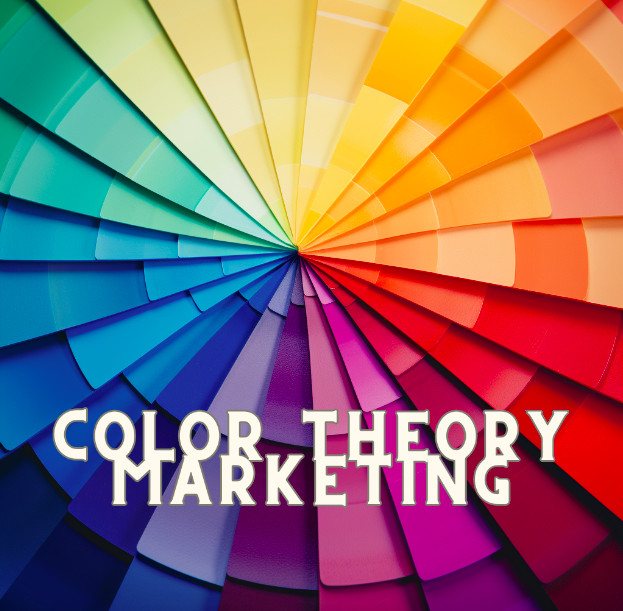Of the various marketing strategies brands use nowadays, color theory is probably one of the least understood. It’s a way that brands are able to psychologically manipulate consumer’s perception of their product, and there are several success stories to learn from.

Defining Color Theory Marketing
The psychology of color in marketing is well documented and there is plenty of research to back up the claims of this theory. People’s general response to different colors and hues is clear and pretty consistent. For example, consumers consistently associate green with nature. Brands may use this color in their logo or packaging to communicate with potential buyers that their product is natural and wholesome.
White is typically linked to cleanliness and simplicity. A brand trying to showcase their minimalist philosophy might use white in their product packaging or marketing content. This would include their digital marketing (social media posts, sponsored online ads, etc.) and their traditional marketing (printed media, logos etc.)
Success Stories To Draw Inspiration From
Now that we’ve established how important the psychological impact of color theory can be for marketing, let’s review some case studies. The following are brands that have successfully applied color theory in their marketing strategy, whether intentional or not.
Coca Cola Red
Probably one of the most well studied applications of marketing color theory is Coca Cola’s signature red hue. Even as you are reading this, you can probably imagine the exact shade of red that is used by the company.
Admittedly, the original reason they used red wasn’t with marketing in mind. The company originally painted their barrels of Coke in red so that they could tell them apart from barrels that contained alcohol. This is way back in the 1890s. However, because the company has been consistently using the same shade for over a century, it’s become a branded color.
In fact, Coca Cola recently launched a campaign called the “One Brand Strategy”. Its entire product line is now colored exclusively red, with only the parts of the bottles colored differently. Zero Coke, which was previously black, and Diet Coke (previously silver), are both now colored the classic Coca Cola Red.
This shade of red is linked to excitement, passion, and energy. The same color is also used in all Coca Cola’s marketing campaigns. Even their billboards and TV ads feature a splash screen in the red hue at least once. Consumers have come to associate the color and brand together.
Tiffany & Co. Blue
Another well known example of color branding, Tiffany & Co is a luxury design house with a distinct shade of victorian Turquoise blue used across its packaging and interior design. The robin’s-egg blue shade was used in Tiffany’s “Blue Book” in 1845. It was a brochure of hand-drawn designs that the jeweler sent to their most valued customers.
While there is no reported reason why this shade was chosen, many suspect it is because turquoise was a popular gemstone during Victorian times. The color was associated with luxury, elegance, and class which is likely what Tiffany’s founder was thinking. Nowadays, the little blue Tiffany boxes are so iconic, people use the shade to make Tiffany themed bridal showers, cafes, etc.
Nickelodeon Orange
If there ever was a color people disliked most, it would be orange. However, it’s a quirky color that is often associated with playfulness, energy, and youth. In this case, Nickelodeon made a cognitive decision to choose this color for their logo and branding. The orange hue lines up perfectly with the content of the first children’s cable TV channel. Not only that, their TV shows are often quirkier than other children’s programs.
The hue of orange that the company has chosen moves away from the warmth that is favored by other logos. Instead, the bright orange color is commonly associated with energy and it’s kid-friendly. That’s an appropriate color for the branding, and it clearly works. It’s also great with other fun complementary colors such as green (very weird) and yellow (bright and energetic).
Caterpillar Yellow
Last but certainly not least, Caterpillar’s iconic yellow makes their construction equipment and apparel stand out from the grays and blacks usually used by competitors. The company originally had all their machines in gray, and only adopted the iconic yellow color in 1931. It’s not certain whether this was intentional, but this rebranding switch has allowed their construction equipment to be distinguished on construction sites.
Based on the psychological aspect of color theory, yellow is also a color that denotes safety and visibility—two things that are incredibly important when it comes to construction equipment.
Final Thoughts
As you can see, many major brands use color theory in their marketing. They are able to build brand recognition through the colors used in their products, packaging, and marketing campaigns. Companies are able to change consumer perception of their products through color theory marketing. Consider the impact of your color choices both professionally and personally, especially if you’re building a business.